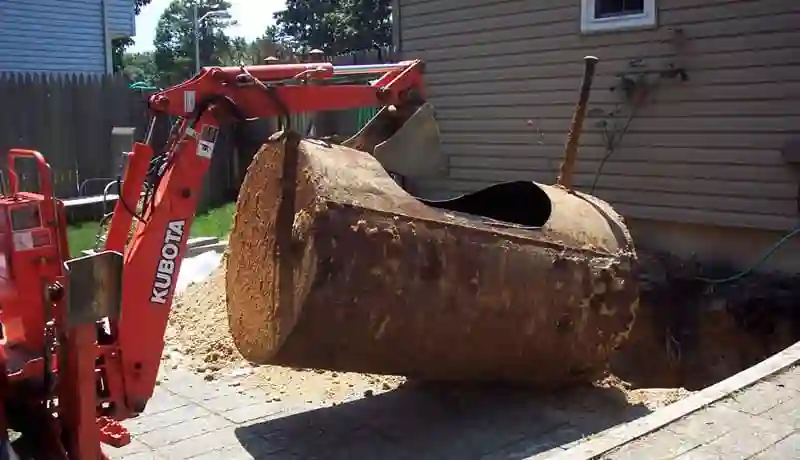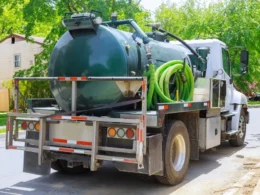In the quiet corners of many homes, beneath the soil, lies a potential source of trouble – aging oil tanks. As these tanks weather the test of time, they pose environmental and safety risks that necessitate proactive measures. For homeowners facing the prospect of oil tank trouble, navigating the process of removal is crucial. In this comprehensive guide, we’ll delve into the intricacies of oil tank removal, providing homeowners with the knowledge and guidance needed to address tank trouble effectively.
1.Recognizing the Signs of Tank Trouble:
The first step in the oil tank removal journey is recognizing the signs of trouble. Aging tanks may exhibit corrosion, rust, or visible damage, signaling potential issues. Regular inspections, either conducted by homeowners or professionals, can help identify these warning signs early on and prompt timely action.
2.Understanding Environmental and Safety Risks:
Oil tank trouble goes beyond aesthetic concerns; it involves substantial environmental and safety risks. Leaks from deteriorating tanks can contaminate soil and groundwater, leading to environmental damage. Moreover, the potential for fire hazards and health risks increases as oil interacts with the surrounding ecosystem. Understanding these risks underscores the importance of addressing tank trouble promptly.
3.Navigating Legal Compliance:
Local and state regulations govern the installation, maintenance, and removal of oil tanks. Homeowners must navigate legal compliance to avoid fines and legal consequences. Familiarizing oneself with the specific regulations in the local area and seeking professional advice ensures a smoother process and helps in adhering to the necessary legal standards.
4.Choosing the Right Time for Removal:
Determining the right time for oil tank removal is critical. Proactive homeowners often choose to remove tanks before they reach the end of their expected lifespan or show signs of deterioration. Early removal helps prevent potential leaks and environmental damage. On the other hand, if tank trouble is already apparent, immediate action is necessary to mitigate risks effectively.
5.Securing Professional Assistance:
Oil tank removal is a complex process that requires professional expertise. Certified tank removal experts bring the knowledge, experience, and specialized equipment necessary for safe and efficient removal. Attempting to remove an oil tank without professional assistance not only poses risks to the property and the environment but may also lead to legal complications. Securing professional assistance ensures compliance with regulations and minimizes potential accidents.
6.Site Assessment:
Before initiating the removal process, a comprehensive site assessment is essential. This involves locating the tank, evaluating its condition, and determining potential environmental impact. Soil and groundwater testing may be necessary to identify any contamination. A thorough site assessment guides the removal process and helps in planning for any necessary remediation.
7.Safe Tank Pumping and Cleaning:
The actual removal process kicks off with the safe pumping and cleaning of the tank. Any remaining oil is extracted, and the interior of the tank is thoroughly cleaned to minimize the risk of spills during extraction. Proper disposal of the extracted oil is crucial to prevent environmental contamination.
8.Excavation:
If the decision is made to completely remove the oil tank, excavation becomes a critical phase. The area surrounding the tank is excavated to fully expose it, allowing for a detailed inspection. Specialized equipment is then used to carefully lift the tank from its underground location. Precision is paramount during excavation to avoid damage to the tank and surrounding structures.
9.Environmental Remediation:
In cases where soil or groundwater contamination is detected during the removal process, environmental remediation measures are implemented. Remediation may include the removal and replacement of contaminated soil or advanced treatments for groundwater. This step is essential for mitigating the environmental impact of the oil tank and ensuring regulatory compliance.
10.Documentation and Reporting:
The final step in the oil tank removal process involves comprehensive documentation and reporting. Homeowners receive a detailed report outlining the entire removal process, environmental assessments, and any remediation activities. This documentation is crucial for proving compliance with regulations and serves as a record of responsible environmental stewardship.
Conclusion:
For homeowners facing tank trouble, understanding the process of oil tank removal is key to safeguarding their property and the environment. From recognizing signs of trouble to navigating legal compliance, securing professional assistance, and undertaking a comprehensive site assessment, each step plays a vital role. With the right knowledge and proactive measures, homeowners can navigate tank trouble effectively, ensuring a smooth and environmentally responsible oil tank removal process.











